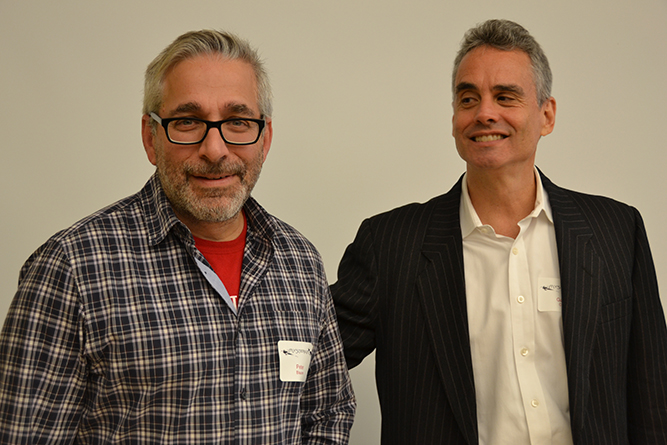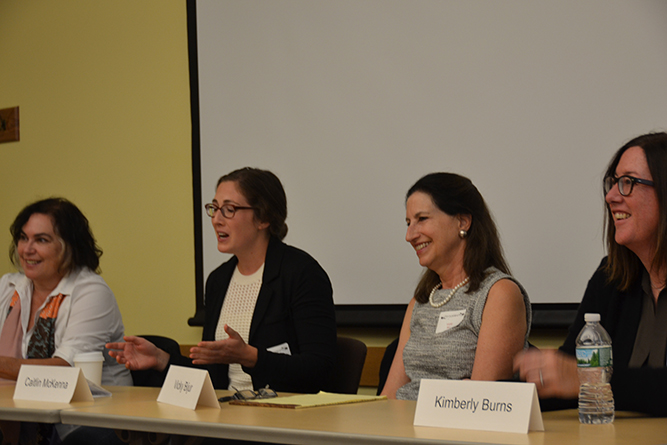Mysterium Conference Draws Writers, Readers
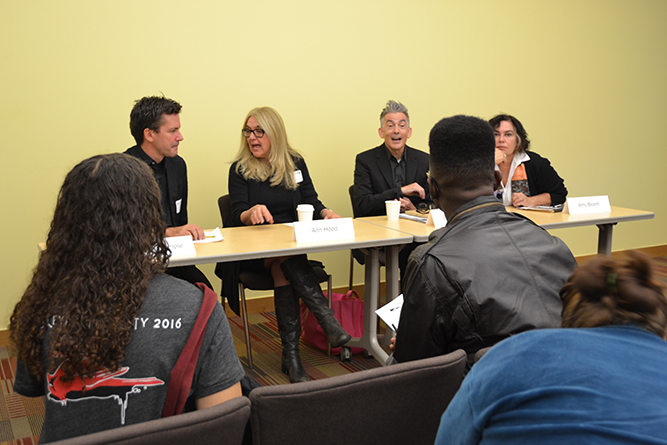
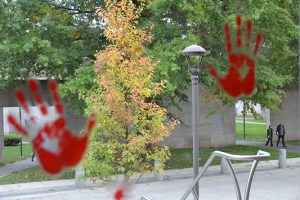
Bloody handprints smeared the glass doors to Usdan, the clue to Mysterium attendees that they had arrived at the scene of their conference on Oct. 8. Red footprints led them to the sign-in table and the schedule, which boasted a cohort of award-winning mystery writers and those in publishing—including Wesleyan alumni.
Hosted by Amy Bloom ’75, the Shapiro-Silverberg Professor of Creative Writing at Wesleyan, the day-long event opened with a keynote with Laura Lippman—a New York Times bestselling author of detective fiction including the Tess Monaghan series—and brought alumni, parents, as well as mystery writers and readers to campus for panel discussions, book signings, master classes and networking.
“A great mystery is a frigate,” said Bloom, introducing the conference and Lippman. “It takes you away. Great ones do it with extraordinary vision, extraordinary language. A mystery is the only literary form that lulls, compels, intrigues and gratifies you.” She praised Lippman for her capacity to illuminate characters—and to follow the thread of the story in a way that “never seems formulaic.”
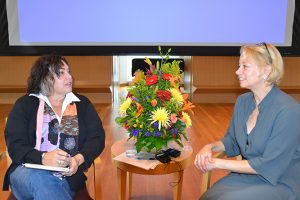
Lippman described her writing process as beginning with a character, a situation, and a secret. “In a crime novel, anything can happen on page one. The options narrow as the story goes along.” The question she asks herself is, “Who will Tess Monaghan be at the end of the novel?”
Later, different panels discussed “cozy mysteries”—a genre most likely to feature a main character not a professional investigator and ensconsed in a community—as well as “noir novels”—those in which the good are not likely to find redemption, nor are the guilty to be punished. Additionally, publishers, publicists and writers gathered for a panel highlighting the process of getting one’s manuscript onto bookshelves and into peoples’ hands.
Gabriel Cohen ’92 and Peter Blauner ’82 commented on their friendship—since frosh year in the same dorm; their similar path to detective fiction—initially through journalism; and the fact that each one was recognized by the Edgar Awards. Blauner researched his book, Slow Motion Riot, by serving as a probation officer for six months. Cohen, also, noted that a memoir by a detective was key to his development in the genre. “I was not influenced by Raymond Chandler,” he said, “but instead, by a memoir by real homicide detective, which made me think about how seeing dead bodies every day would affect me.”

